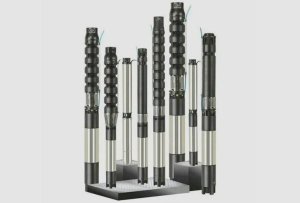In various industries, efficient fluid handling is crucial for smooth operations. One of the most reliable solutions for pumping liquids in deep wells, drainage systems, or industrial plants is the Submersible Centrifugal Pump. Known for its efficiency, compact design, and ability to operate underwater, this pump has become an essential part of modern pumping systems.
What Is a Submersible Centrifugal Pump?
A Submersible Centrifugal Pump is a type of pump designed to operate while completely submerged in the liquid it is meant to pump. It uses centrifugal force to move liquid through the impeller and convert rotational energy into kinetic energy. These pumps are sealed tightly to prevent liquid from entering the motor chamber, allowing smooth and safe underwater operation.
Unlike surface pumps, submersible centrifugal pumps eliminate the need for priming and can lift fluids from significant depths efficiently.
How Does a Submersible Centrifugal Pump Work?
The working principle of a Submersible Centrifugal Pump is based on the conversion of mechanical energy into kinetic energy.
Here’s how it works:
-
The pump impeller rotates, creating a low-pressure zone at the eye of the impeller.
-
The liquid enters this zone and is pushed outward by centrifugal force.
-
As the liquid moves outward, its velocity increases and pressure energy builds up.
-
The liquid is then discharged through the outlet under high pressure.
Because the entire assembly is submerged, it prevents air binding and ensures efficient and silent operation.
Key Features of Submersible Centrifugal Pumps
-
Fully Sealed Motor: Ensures safe operation under water.
-
Compact and Lightweight Design: Easy to install and handle.
-
High Efficiency: Delivers maximum fluid output with minimal energy consumption.
-
Corrosion-Resistant Materials: Suitable for harsh and corrosive environments.
-
Low Noise Operation: Smooth, vibration-free functioning.
-
Self-Cooling System: The surrounding liquid cools the motor, reducing overheating risk.
Applications of Submersible Centrifugal Pumps
Submersible Centrifugal Pumps are used in a wide range of sectors due to their versatility and performance.
Common applications include:
-
Water Supply Systems: Domestic and municipal water distribution.
-
Irrigation: Agricultural fields, gardens, and greenhouses.
-
Industrial Processes: Pumping chemicals, slurry, and wastewater.
-
Sewage & Drainage: Removing water from flooded areas or wastewater pits.
-
Oil & Gas Industry: For handling underground fluids and oil extraction.
-
Mining Operations: Dewatering of mines and tunnels.
Advantages of Submersible Centrifugal Pumps
-
No Priming Required: The submerged design eliminates air pockets.
-
High Efficiency: Minimal energy loss and low operational cost.
-
Space-Saving Design: Installed directly in the fluid source, requiring no extra housing.
-
Reduced Cavitation Risk: The pump operates below the liquid surface, reducing air-related issues.
-
Durable & Long-Lasting: Built with high-quality materials for extended service life.
Maintenance and Safety Tips
To ensure long-lasting and efficient performance of your Submersible Centrifugal Pump, follow these best practices:
-
Regularly inspect the motor seals and cables.
-
Avoid running the pump dry.
-
Clean the impeller and filter to prevent clogging.
-
Monitor vibration and noise levels for early fault detection.
-
Follow manufacturer guidelines for periodic servicing.
Conclusion
A Submersible Centrifugal Pump is a reliable and energy-efficient solution for pumping fluids in a variety of industrial, commercial, and domestic applications. With its robust design, minimal maintenance, and high performance, it remains a preferred choice across industries where fluid transfer, dewatering, or irrigation is required. Investing in a high-quality submersible centrifugal pump ensures durability, efficiency, and uninterrupted operation even under challenging conditions.






